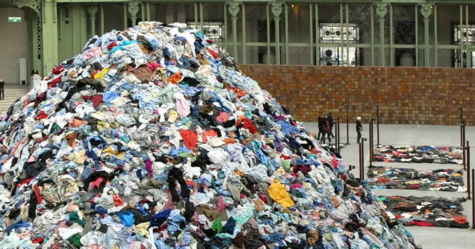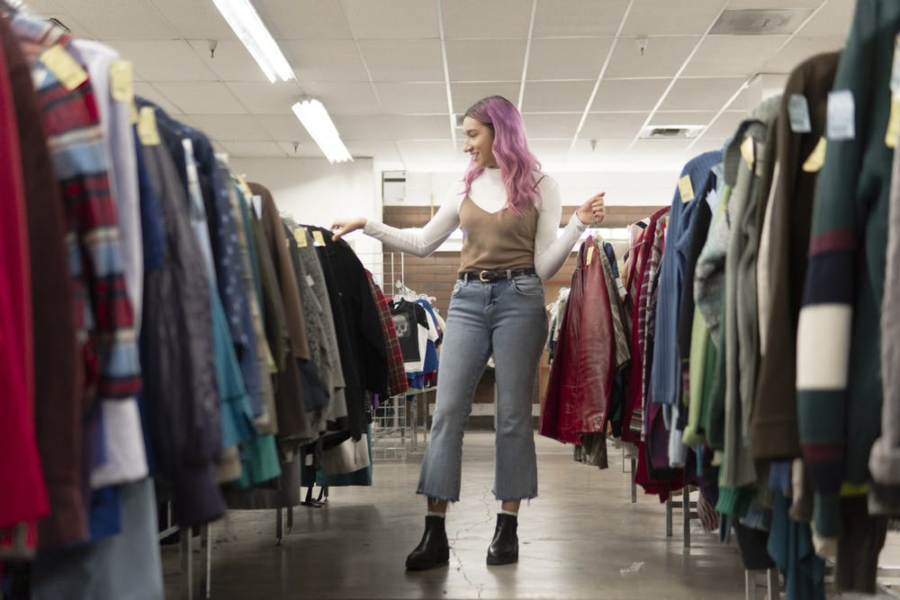Yes, Those Unsustainable Jeans Do Look Bad on You
November 18, 2021
Fashion trends change in an instant, almost quicker than the average consumer can keep up with. One trend that is necessary to sustain for the long-run, however, is a global shift towards more eco-friendly shopping methods.
Though shopping is a therapeutic and euphoric experience for many, most buyers are entirely oblivious to the direct contributions their Hollister jeans make to the destruction of the planet. Just that pair of jeans alone requires roughly 1,800 gallons of water to produce!

Brands such as Romwe, Zaful, or Shein are some of the chief culprits for environmental damage in the fashion industry.
These brands are able to constantly churn out new products by using cheap and harmful manufacturing methods, including and the use of synthetic fibers, such as nylon or polyester.
These fibers, produced from coal, microplastics, petroleum, or wood pulp, emit chemicals and toxic wastes such as nitrous oxide, which is 300 times worse for the environment than carbon dioxide! The UK’s Carbon Trust even found that one shirt alone is expected to be responsible for nearly 15kg of carbon dioxide across its lifetime.
Furthermore, because synthetic fibers are usually non-biodegradable, mass amounts of discarded clothes end up in landfills or in the ocean every year, contributing significantly to microplastic pollution. In fact, about 60% of material put into making clothing is actually plastic!
Although these facts may seem scary, there are a number of positive developments to consider before you burn your credit cards and say goodbye to the shopping carts for good.
Obviously, thrifting is one of the hottest sustainable alternatives in the modern landscape. Be it Savers, Goodwill, Depop, or ThredUp, more and more Gen-Zers are taking an interest in secondhand shopping and delight in thrift store trips with their friends that double as both fun fashion excursions and a means to protect the planet.
The Pentucket environmental club recently hosted a school-wide clothing swap in October to encourage secondhand shopping among the student body. Students were invited to bring in their unwanted clothes to the swap and trade them in for new ones at no charge. The event was a success, but the club is hoping for an even bigger turnout at the next swap in the spring. If looking for opportunities to make your fashion habits more sustainable, these swaps can be a great place to start!
Second-hand shopping is becoming increasingly popular due to its amazing eco-friendliness. Buying used clothes that have already been manufactured eliminates the need to produce more unsustainable fashion with more pollution. According to Thred-Up, one of the largest online thrift stores, “by choosing used over new, you reduce your carbon footprint by 60-70%.” Now that’s a pretty impressive statistic.
And options for sustainability in the clothing industry are becoming even more abundant thanks to the trail-blazing work of various eco-friendly brands.
Patagonia was one of the first clothing brands to use recycled materials and organic cotton instead of synthetics, and it even offers a secondhand ‘Worn Wear’ collection.
Pact is another sustainable trend-setter: it grows and harvests its own organic, non-GMO cotton, as well as offers carbon-offset shipping.
Levi’s is also known for using eco-friendly and sustainable practices like recyclable denim and ethically-sourced cotton, and Reformation is certified carbon and water-neutral.
Although for the time being many of these brands tout steep prices, the solution is . . . put your money where your mouth is and stop investing in fast fashion brands!
Fast fashion remains king only because of the consumers that continue to put money into its pockets. If society collectively makes the shift to sustainability and instead invests in those more eco-friendly brands, the fast fashion industry will lose its profits, allowing more ‘slow-fashion’ to take its place at the top of the fashion food chain.
That being said, affordable options do currently exist, such as Fare Indigo and the Good Tree, that allow you to rock outfits that are both biodegradable and fashionable.
You shouldn’t have to sacrifice sustainability for the convenience fast fashion provides with its mass-produced products. Although it can be tempting to mindlessly splurge on a pair of new jeans with a 2-day ship time, remember that each credit card swipe for the fast fashion industry is another statistic tacked onto climate change.
The only fashion trend you need to be following is sustainability, and clearly, the ability to make this shift is just a few computer clicks or thrift store trips away.
Sources

